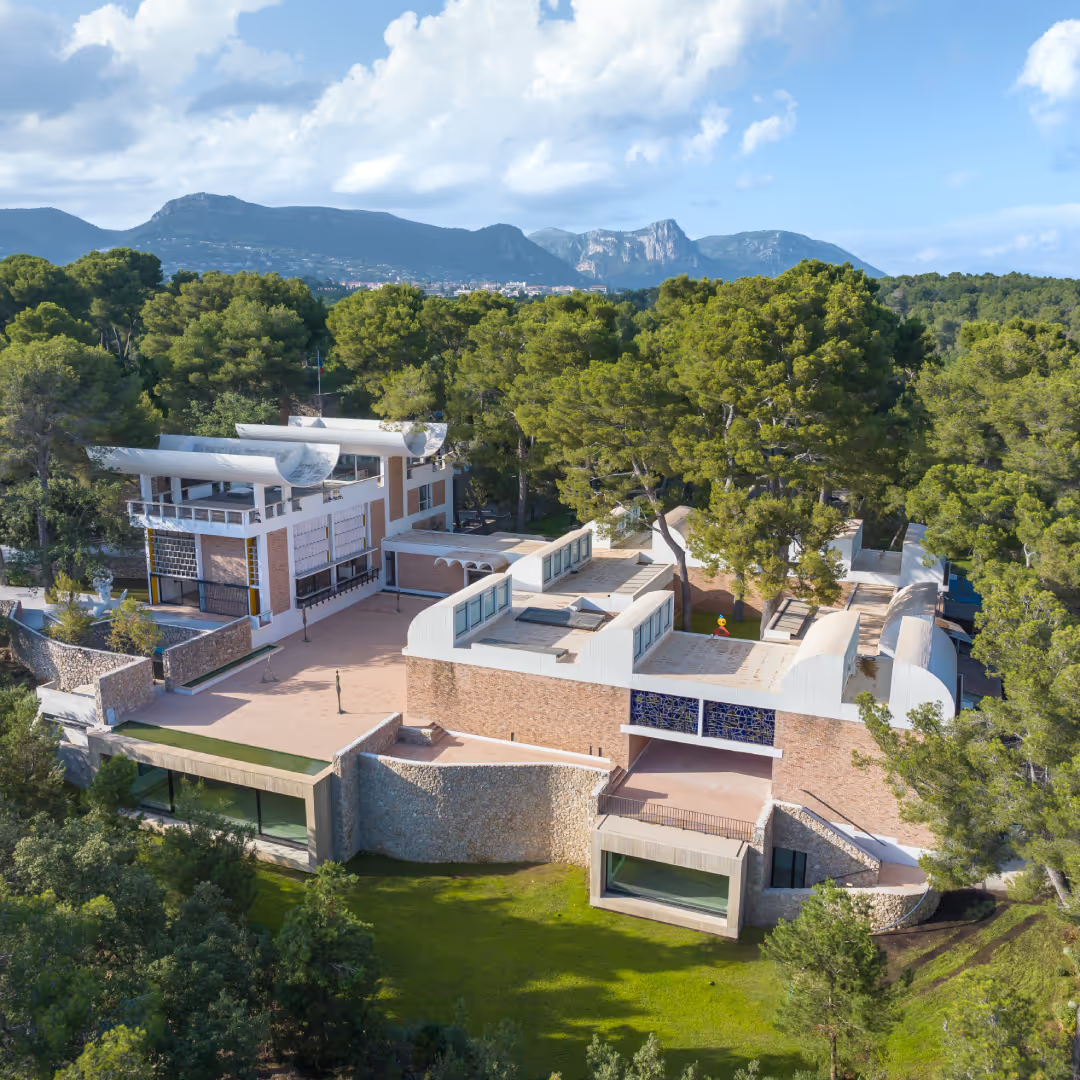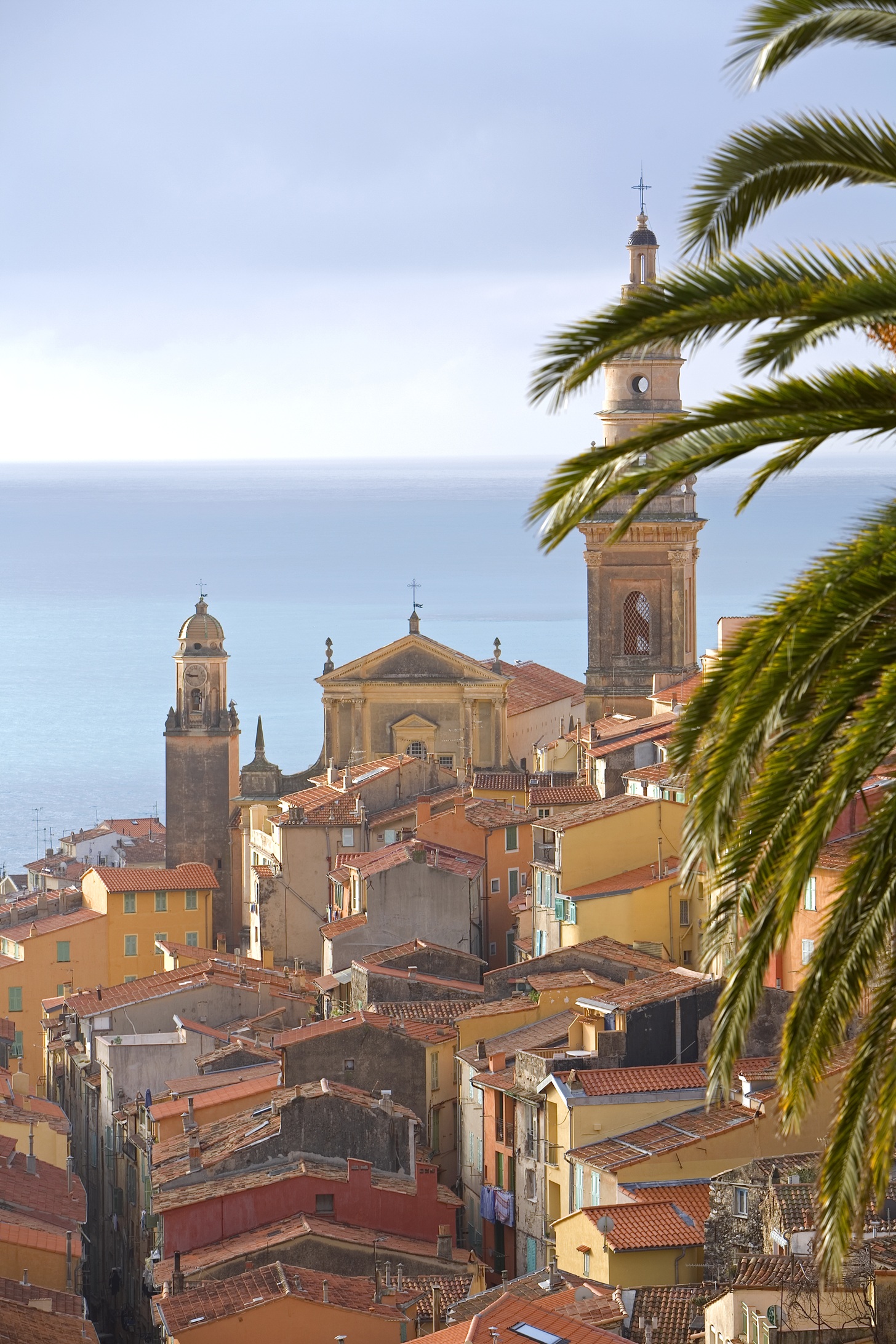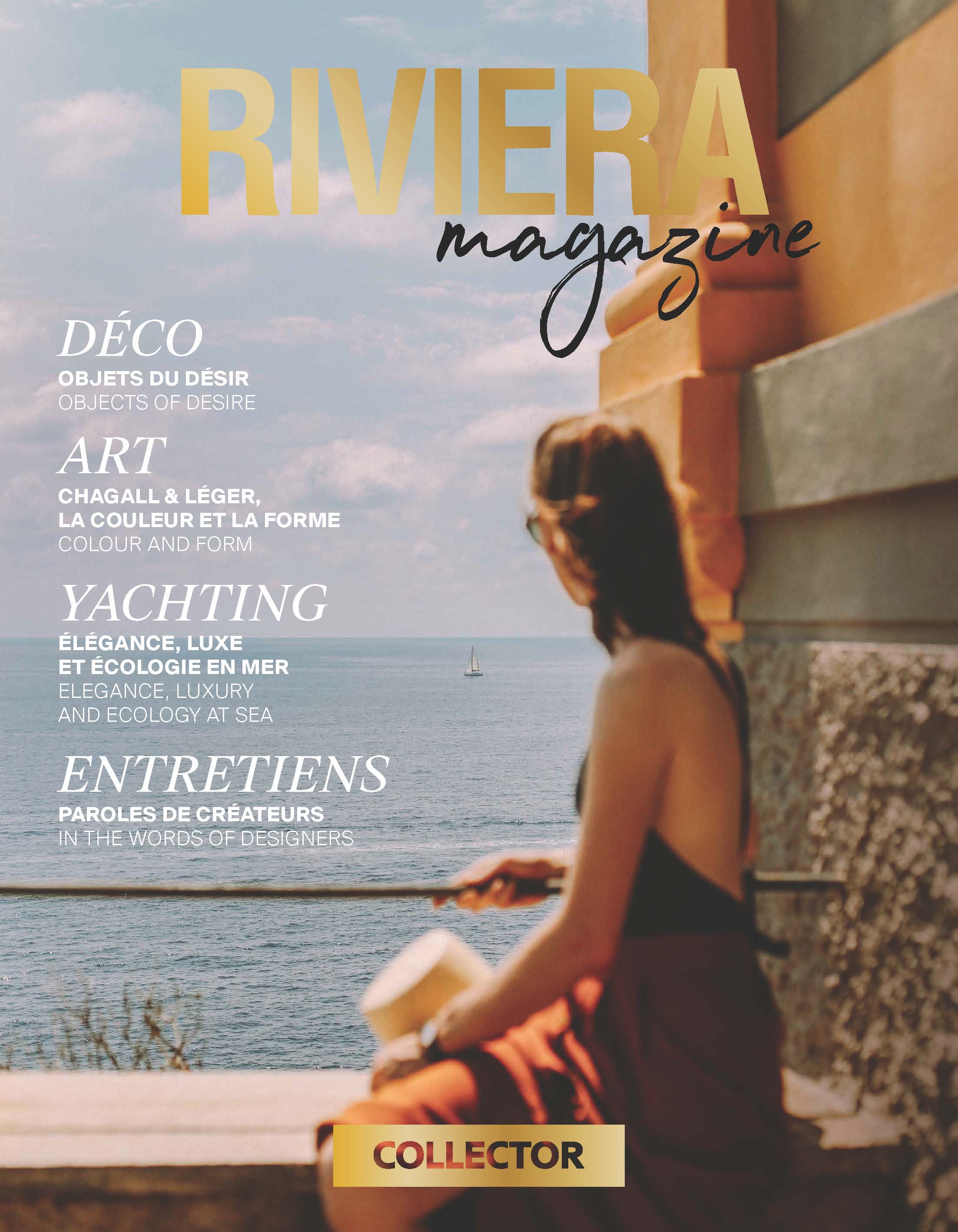From Monet to Picasso, from Cocteau to Klein, to contemporary street art, the Côte d'Azur has inspired the greatest artists for over a century. Light, nature, architecture: everything here invites you to create. Panorama of a territory where art is lived in museums, foundations, and in the open air.
A paradise of light
From the end of the 19th century, artists went south, attracted by a new light, bright colors, and the mild Mediterranean climate. In 1888, Claude Monet painted Antibes and its water features, fascinated by the silver reflections of the sea and the transparency of the air. Pierre Bonnard settled in Le Cannet in his house in Le Bosquet, where he captured, until his death in 1947, the solar intimacy of Mediterranean interiors. Today, the Bonnard Museum, a stone's throw from his home, pays tribute to this vibrant palette.
A few kilometers away, Auguste Renoir, seduced by the olive trees of the Nice hinterland, chose Cagnes-sur-Mer. His house-studio in Les Colletes has become a living museum, suspended between nature and creation. Henri Matisse arrived in Nice in 1917, overwhelmed by the light. He settled in Regina, and then composed bright interiors, interspersed with decorative patterns, where bright colors dialogue with Mediterranean light. In Vence, he also designed the Rosary Chapel, a manifesto of modern sacred art. His link with Nice is such that a museum is dedicated to him in Cimiez, in a Genoese villa surrounded by gardens, making it possible to retrace the entire career of the Fauve master. ”When I understood that every morning I would see this light again, I could not believe in my happiness. I decided not to leave Nice, and I stayed there for most of my life.”, he will write.
Pablo Picasso, who settled in Vallauris after the war, revolutionized ceramics, painted War and Peace there, and then set up his studio at the Grimaldi Castle in Antibes, now the Picasso Museum. Marc Chagall, for his part, offers Nice a museum dedicated to his biblical work, a fusion of dream and faith, in a building bathed in light.

An art that fits into the landscape
On the French Riviera, art is literally rooted in places. Jean Cocteau embodies this fusion between work and decor. In Menton, he decorated the town hall's wedding hall, then transformed a 17th-century bastion into a museum. In Villefranche-sur-Mer, he painted the Saint-Pierre chapel, and in Saint-Jean-Cap-Ferrat, he decorated the Villa Santo Sospir with mythological frescoes. A place inhabited, sculpted, “tattooed”, in his words, by the Mediterranean spirit.
In Saint-Paul-de-Vence, the Maeght Foundation condense this fusion between nature and creation. Inaugurated in 1964 and recently expanded, it brings together a unique collection (Braque, Miró, Giacometti, Chagall, Bury, Calder...) in an architectural setting designed by Josep Lluís Sert, where the sculptures integrate with umbrella pines and ochre stone in an almost organic communion. The link between architecture, art and nature is so profound that it seems to spring from the earth itself, in a kind of powerful, almost mystical symbiosis.

Museums and galleries for all eyes
In Nice, the MAMAC (Museum of Modern and Contemporary Art), inaugurated in 1990, was, among other things, designed to enhance the heritage of the Nice School, an artistic movement born in the 1960s, bringing together artists such as Ben, Arman, César, Yves Klein, Jean Mas, or even Niki de Saint Phalle, united by the desire to break the codes of traditional art while remaining linked to the Mediterranean.
In Nice, the Anatole Jakovsky International Museum of Naive Art, Villa Masséna Or the Jules Chéret Museum of Fine Arts complete a dense artistic career. On the heights of the city, the Villa Arson brings together art school, contemporary art center and residences, in a brutalist architecture open to the horizon.
Galleries, for their part, actively participate in this artistic ferment. In Nice, the Eva Vautier Gallery, founded by Ben's daughter, defends a committed and multifaceted contemporary scene. The Space for sale, directed by Bertrand Baraudou, has become a landmark for emerging artists and the most experimental forms of current creation. Still in Nice, the artist Fred Allard has opened a space in his name where his window sculptures, inspired by luxury, street and pop art, offer a singular aesthetic, a nod to contemporary society.
In Saint-Paul-de-Vence, nearly twenty art galleries line the streets of the village, between intimate workshops and international spaces. Among them, the Catherine Issert Gallery is distinguished by its historical roots in abstraction and its fidelity to the great names of conceptual art.
In Monaco, the New National Museum of Monaco (NMNM) affirms a strong identity through its two sites, Villa Paloma and Villa Sauber, which host exhibitions, installations and contemporary art projects in a desire for dialogue between heritage and creation. A demanding program, open to the world, which combines photography, design, performance and video, in a princely setting.
In Saint-Tropez and Monaco, the Galeries Bartoux present the big names of international contemporary art, between spectacular sculptures and neo-pop works. Again in Monaco, Bel Air Fine Art Shake up the codes with an eclectic selection combining hyperrealism, street art, digital works and unusual creations.
In Hyères, the Villa Noailles —avant-garde and modernist — is now a dynamic center dedicated to photography, fashion and design. In Cannes, the La Malmaison Art Center on the Croisette hosts major temporary exhibitions. Mougins is famous with its Photography Center, and places like the Venet Foundation (Le Muy), the CAB Foundation (Saint-Paul-de-Vence), the Concrete Art Space (Mouans-Sartoux) or even the Carmignac Foundation in Porquerolles, enrich the landscape with unique initiatives.

Street art, an open-air Riviera
The Côte d'Azur can also be experienced on its walls. As early as 1974, the Niçois Ernest Pignon-Ernest, a pioneer of street art, stuck his black, powerful and political figures to Nice, sketching the beginnings of committed urban art. Since then, the Côte d'Azur scene has grown: from Grasse to Saint-Laurent-du-Var via Le Cannet, Cannes or Nice, monumental frescoes and poetic collages dot cities like an open-air gallery. Mr One Teas, Brian Caddy, Ernesto Novo, or Faben are reinventing the walls of the Riviera and street art tours are even offered in Cannes or Grasse, where you can discover the works along the streets as urban treasures. A new form of dialogue between art and territory, popular, lively and resolutely contemporary.

A territory in perpetual dialogue with art
Even today, the Côte d'Azur remains a creative hub. Confirmed or emerging artists extend the heritage of the masters while interpreting it with new forms. Patrick Moya, a tireless explorer of the virtual, combines digital art, immersive installations and avatars in a universe that is as dense as it is unique. Jérémy Taburchi, with his Pink Cat, a free and sunny figure, celebrates a pop and playful Mediterranean. Franck Saïssi composes sensitive and fragmented works where memory arises between figuration and abstraction. Laurence Jenkell, famous for her giant plexiglass candies, has established herself on the international scene with a sweet but political aesthetic. Philippe Pasqua, whose powerful works, monumental skulls or flayed butterflies, are exhibited in Monaco as well as in Saint-Paul-de-Vence, explores the themes of memory and trace with rare intensity. The memory of Théo Tobiasse, a major figure on the 20th century Riviera scene, continues to shine thanks to the work of his daughter, who ensures that her work, which is steeped in dreams, exile and light, comes to life. At their side, Robert Combas, a leader in free figuration, or even Bernar Venet, a conceptual sculptor, reinforced the artistic prestige of the region. Others such as Ugo Rondinone, Daniel Buren or Manolo Valdés regularly invite themselves to institutions and galleries on the Riviera, placing their work in a fruitful dialogue with the landscapes of the South. The local scene is also enriched by singular artists such as Stephane Bolongaro, a sculptor and performer from Nice, whose poetic and joyfully quirky universe of his Totor infuses a free and fiercely Mediterranean spirit into contemporary creation, not to mention Virginie Broquet, or SAB, with his blue channel.
Villa Arson, in Nice, continues to be a breeding ground for demanding artists, bearers of demanding and conceptual contemporary creation. It includes major figures such as Katinka Bock, a finalist for the Marcel Duchamp Prize, who is developing a sensitive and sculptural work between material, time and landscape. Eva Barto, winner of the Villa Medici, questions the workings of economy and power in art with rare political rigor. Emmanuelle Lainé, praised for her immersive installations and her ability to destabilize perception, builds visual environments of great intensity.
Between sky and sea, ancient and contemporary art, the Riviera remains that rare territory where beauty inspires, questions and transcends.
Cover: Villa Arson © Côte d'Azur France Tourism - Georges Veran


















.avif)


.avif)